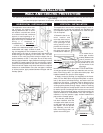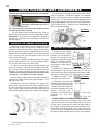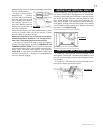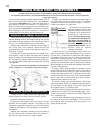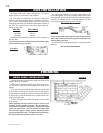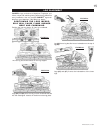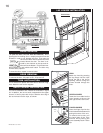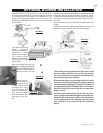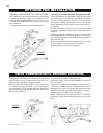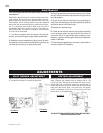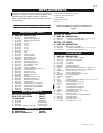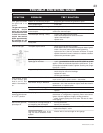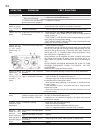
24
W415-0100 / D / 01.13.04
Exhaust fumes
smelled in room,
headaches.
Fireplace is spilling.
- check door seal and relief flap seal.
- check for chimney blockage
- check that chimney is installed to building code.
- room is in negative pressure; increase fresh air supply.
Carbon is being
deposited on
glass, logs or
combustion
chamber sur-
faces.
Flame is impinging on the
logs or combustion chamber.
- check that the logs are correctly positioned.
- open air shutter to increase the primary air.
- check the input rate: check the manifold pressure and orifice size
as specified by the rating plate values.
- check that the door gasketing is not broken or missing and that
the seal is tight.
- check that both 4" and 7" vent liners are free of holes and well
sealed at all joints.
- check that minimum rise per foor has been adhered to for any
horizontal venting.
Air shutter has become
blocked
- ensure air shutter opening is free of lint or other obstructions.
- Restrict vent exit. See "RESTICTING VERTICAL VENTS".
- VENT HEIGHT LESS THAN 10 FEET: close air shutter slightly to
reduce primary air.
- VENT HEIGHT 10 TO 20 FEET: close restrictor plate by 2/3 (to 30°
open) from the normal factory setting.
- VENT HEIGHT MORE THAN 20 FEET: close restrictor plate com-
pletely from normal factory setting.
Aggressive venting action due
to vent height.
Flames are very
active.
Main burner goes
out; pilot goes out.
Refer to "MAIN BURNER GOES OUT; PILOT STAYS ON"
Vent is blocked
Vent is re-circulating
- check for vent blockage.
- check joint seals and installation.
4" flexible vent has become
disconnected from fireplace.
- re-attach to fireplace.
Remote wall
switch is in "OFF"
position; main
burner comes on
when gas knob is
turned to "ON" po-
sition.
Wall switch is mounted upside
down
- reverse.
Faulty valve.
- replace.
- replace.
Remote wall switch is ground-
ing.
- check for ground (short); repair ground or replace wire.
Remote wall switch wire is
grounding.
White / grey film
forms.
Sulphur from fuel is being de-
posited on glass, logs or com-
bustion chamber surfaces.
- clean the glass with a recommended gas fireplace glass cleaner.
DO NOT CLEAN GLASS WHEN HOT.
If deposits are not cleaned off regularly, the glass may become
permanently marked.
Flames are con-
sistently too large
or too small.
Carboning oc-
curs.
- check pressure readings:
Inlet pressure can be checked by turning screw (A) counter-clock-
wise 2 or 3 turns and then placing pressure gauge tubing over the
test point. Gauge should read 7" (minimum 4.5") water column for
natural gas or 13" (11" minimum) water column for propane. Check
that main burner is operating on "HI".
Outlet pressure can be checked the same as above using screw
(B). Gauge should read 3.5" water column for natural gas or 10"
water column for propane. Check that main burner is operating on
"HI".
AFTER TAKING PRESSURE READINGS, BE SURE TO TURN
SCREWS CLOCKWISE FIRMLY TO RESEAL. DO NOT
OVERTORQUE.
Leak test with a soap and water solution.
Unit is over-fired or under-fired.
Main burner
flame is a blue,
lazy, transparent
flame.
Blockage in vent. - remove blockage. In really cold conditions, ice buildup may occur
on the terminal and should be removed as required.
Incorrect installation.
- refer to Figure 16 to ensure correct location of storm collars.
SYMPTOM PROBLEM TEST SOLUTION



